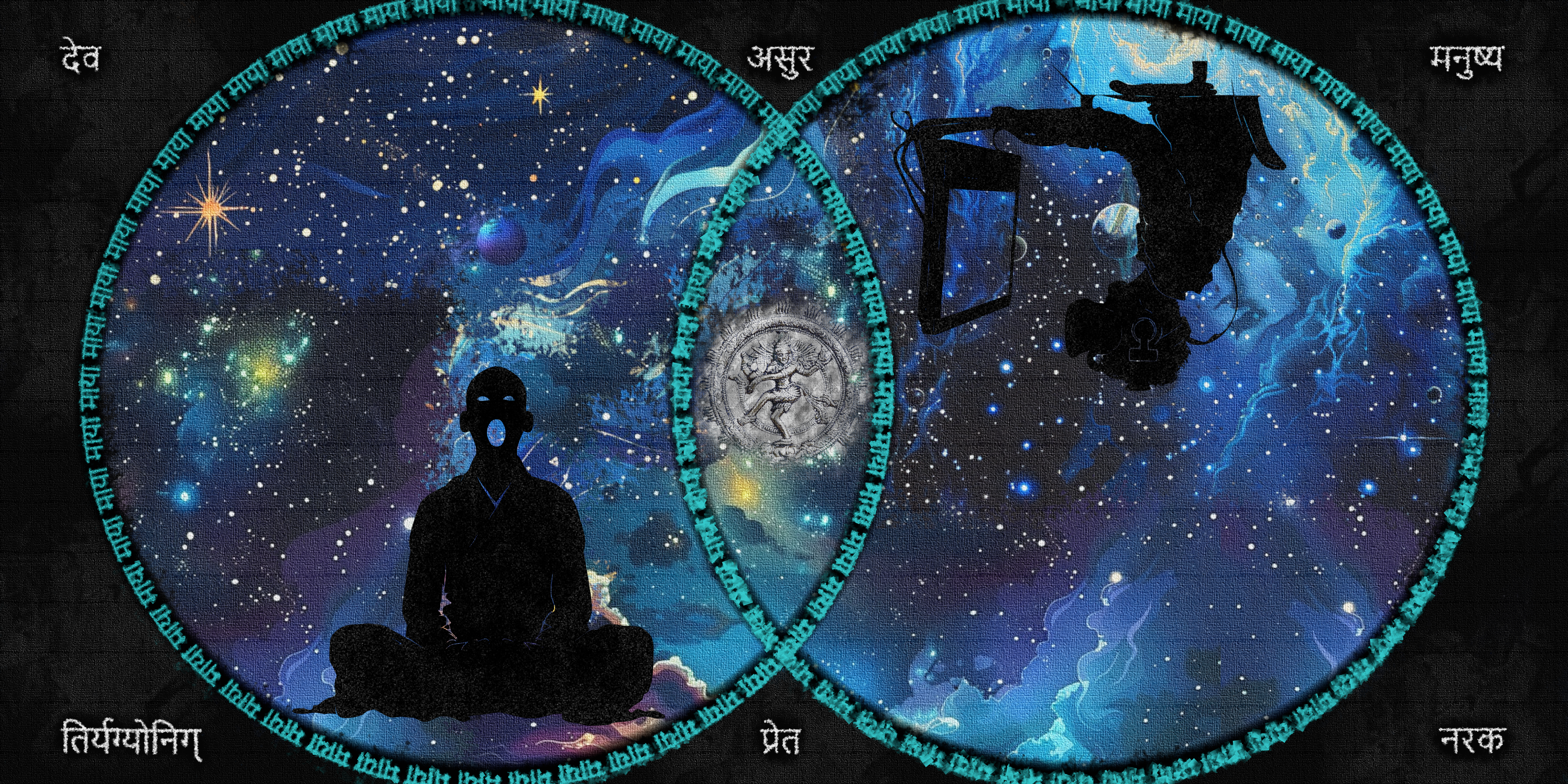Escaping Maya
Gallery | Links:

In Hindu philosophy, माया (Maya) refers to the illusion or the cosmic force that creates a veil over our perception of reality. It suggests that the material world, with all its pleasures and pains, is not the ultimate reality but rather a temporary and deceptive aspect of existence. The attachment to ephemeral pleasures and material possessions fosters ignorance (Avidya), which further perpetuates the endless cycle of birth, death, and rebirth (Samsara). The peril lies in mistaking the transient for the eternal, leading to suffering as we chase after desires that can never be permanently fulfilled; distracting us from the pursuit of true knowledge and liberation (Moksha), which lies in understanding the illusory nature of the world and realizing the eternal self (Atman) beyond it.
In Buddhism, the following six realms of Samsara are recognized:
देव (Deva) - Represents attachment to pleasure and pride. Beings here experience immense pleasure but are blinded to the suffering of others and the impermanence of their state.
मनुष्य (Human) - Signifies desire, passion, doubt, and the potential for enlightenment. It’s considered the most favorable realm for spiritual growth because of the balance of pleasure and suffering.
असुर (Titan) - Symbolizes jealousy and competitiveness. Beings here enjoy many pleasures but are constantly in conflict, driven by envy of the gods.
तिर्यग्योनि (Animal) - Embodies ignorance, instinct, and survival. Beings here are driven by basic needs and lack the capacity for higher reasoning or spiritual development. They are stagnated and complacent from being content out of ignorance.
प्रेत (Hungry Ghost) - Characterized by insatiable craving and addiction. Beings suffer from extreme hunger and thirst but cannot find satisfaction.
नरक (Hell) - Represents anger, aggression, and hatred. Beings endure intense suffering and pain, often the result of harmful actions in past lives.
